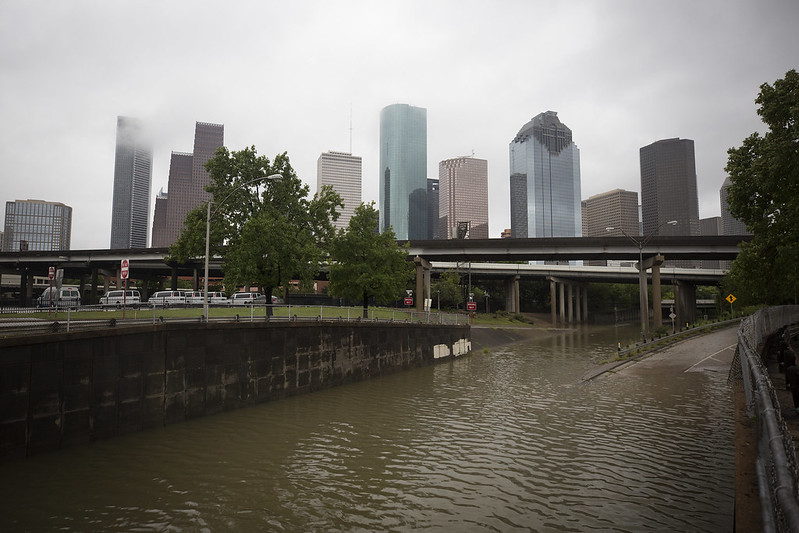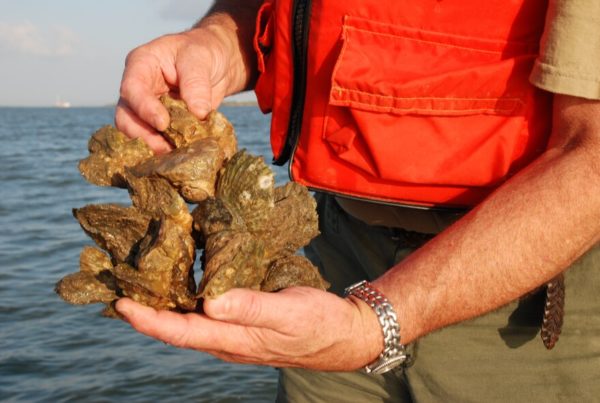Houston is considering a flood tunnel system as a potential means of combating extreme weather – a project similar to the often unnoticed three miles of underground tunnel in San Antonio.
Engineers in Houston are looking at San Antonio’s decades-old flood system as a model for Houston, which saw massive flood damage during Hurricane Harvey. Emily Foxhall covered this story for the Houston Chronicle, where she reports on the environment. Listen to the interview above or read the transcript below.
This transcript has been edited lightly for clarity:
Texas Standard: Tell us a little bit about this flood tunnel. I was unaware that San Antonio had such a thing, but I saw pictures and it’s hard to describe. How would you describe it?
Emily Foxhall: Yeah, it was really amazing to see it in person, just to get a sense of how big it is in scale. But it’s definitely something that a lot of people who live in San Antonio aren’t aware of because so much of it is underground and the place where the water goes in and the water goes out is designed to feel like a small park, so you might not have any idea that it’s there.
So what is it? Is it like a big, giant opening in the ground that’s lined with concrete or what?
Where the water goes in it has some grates to get the big debris out. But then essentially the water goes straight down 150 feet into the ground, then it flows more or less horizontally at a little bit of a tilt for a little more than three miles and then it comes straight back up vertically. So if you go and look at the end, it kind of just looks like a big round swimming pool of water when it’s not flooding and flowing.
Both San Antonio and Austin, apparently, have flood tunnels in place, and I hear Dallas has one on the way. I’m surprised to hear, however, that Houston hasn’t had one already, given the flooding that we’ve seen in Houston in the past – they call it the Bayou City for a reason, right?
I think a lot of people think these flood tunnels can be a good solution for urban environments where there just isn’t that much room to be expanding bayous or adding detention ponds or a big third reservoir. So that’s why other cities have turned to look at them. But Harris County, of course, is different because our elevation change is much more slight here. The Army Corps [of Engineers] has looked at this idea in addition to Harris County Flood Control, and they found a 93-foot elevation difference from Barker Reservoir over in the west side of town to the Ship Channel. So I think a lot of people will be watching to see if the elevation changes enough to make an idea like this really work.
What exactly is happening and why today, almost five years after Hurricane Harvey?
A lot of this thinking did begin right after that storm. And there’s two things that are going on at once. One is that the Army Corps is looking at the idea specifically in relation to the Addicks and Barker reservoirs. And then Harris County Flood Control District is looking at this a bit more big picture. It’s really pretty remarkable, it’s kind of thinking big and thinking in an innovative way about whether a whole network of storm tunnels in more areas than just from the west side of town to the bay or to the Ship Channel could work. So they’re expecting to put out another report on what that might look like in the next couple of months.
When might there be a green light or not? And what are the deciding factors here?
That’s a great question. The county project will still have a third phase of study looking more detailed at exactly where the path of the tunnels could be and exactly what the soil types are in those places. And the Army Corps has about another year of still studying the idea. So we’re a long way off, I think, from actually digging these things out, but they’re very, very expensive. So I think there’s a reason they want to be sure it’s going to work.














